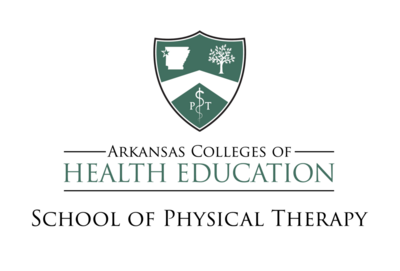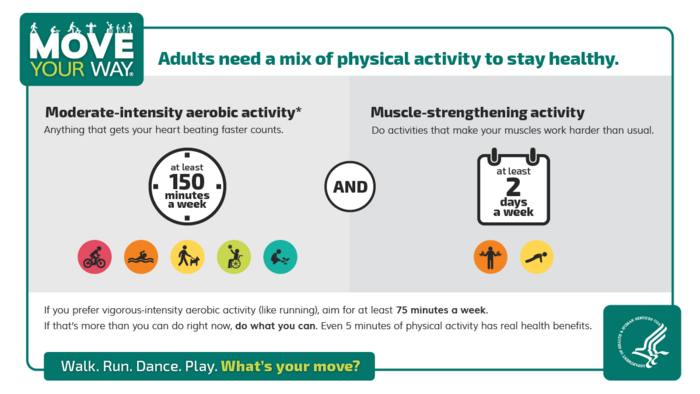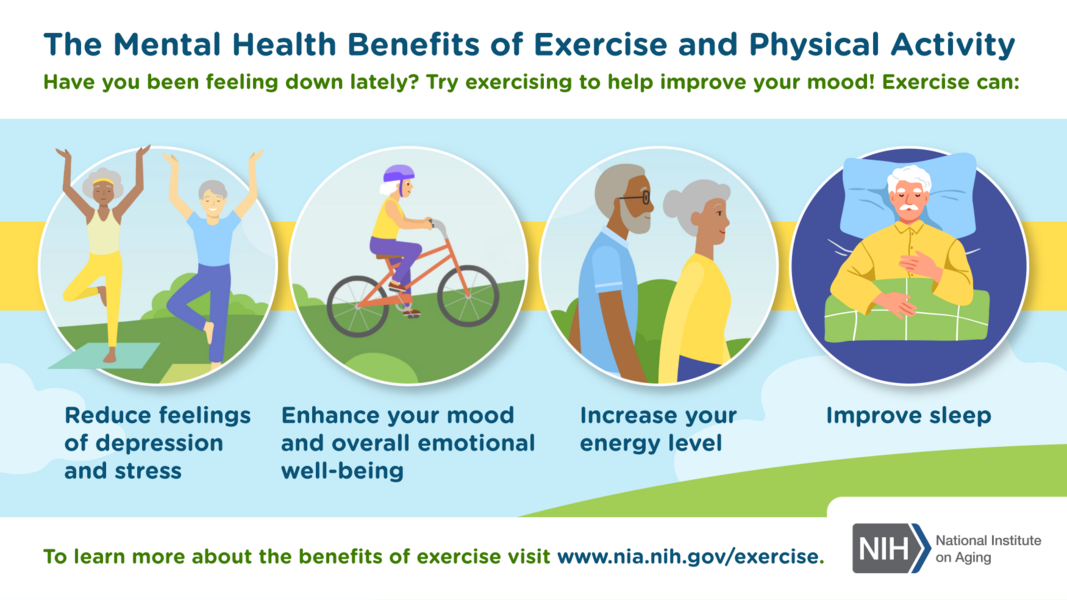Exercise as an Intervention of Holistic Medicine: Difference between revisions
mNo edit summary |
mNo edit summary |
||
| Line 3: | Line 3: | ||
== Holistic Medicine- Everything Matters == | == Holistic Medicine- Everything Matters == | ||
'''Holistic medicine''' considers the whole person and addresses underlying causes of health related issues rather than focusing on symptoms. A holistic approach involves the incorporation and treatment of the mind, body, and spirit while simultaneously considering the emotions, culture, and environment that an individual may experience. <ref>''What is holistic health? Overview and career outcomes''. (2022, May 20). What Is Holistic Health? Overview and Career Outcomes | St. Catherine University. <nowiki>https://www.stkate.edu/healthcare-degrees/what-is-holistic-health</nowiki></ref>While modern-day medicine has developed life-saving medical advancements, it has wired society to look at health in terms of symptoms present rather than looking at the individual in their entirety. Each individual is composed of interdependent parts that work together that impact our overall wellbeing. This includes: emotional, social, spiritual, mental, and physical health which make up the facets of holistic medicine. | '''Holistic medicine''' considers the whole person and addresses underlying causes of health related issues rather than focusing on symptoms. A holistic approach involves the incorporation and treatment of the mind, body, and spirit while simultaneously considering the emotions, culture, and environment that an individual may experience.<ref>''What is holistic health? Overview and career outcomes''. (2022, May 20). What Is Holistic Health? Overview and Career Outcomes | St. Catherine University. <nowiki>https://www.stkate.edu/healthcare-degrees/what-is-holistic-health</nowiki></ref> While modern-day medicine has developed life-saving medical advancements, it has wired society to look at health in terms of symptoms present rather than looking at the individual in their entirety. Each individual is composed of interdependent parts that work together that impact our overall wellbeing. This includes: emotional, social, spiritual, mental, and physical health which make up the facets of holistic medicine. | ||
'''Emotional:''' | '''Emotional:''' | ||
| Line 18: | Line 18: | ||
=== What is Exercise? === | === What is Exercise? === | ||
Terms such as 'exercise', 'physical activity', and 'physical fitness' are often used interchangeably but the framework of each is slightly different. '''Exercise''' is defined as a subset of physical activity that is planned, structured, and repetitive with a final or intermediate objective in mind<ref>Caspersen, C. J., Powell, K. E., & Christenson, G. M. (1985). Physical activity, exercise, and physical fitness: definitions and distinctions for health-related research. Public health reports (Washington, D.C. : 1974), 100(2), 126–131.</ref> | Terms such as 'exercise', 'physical activity', and 'physical fitness' are often used interchangeably but the framework of each is slightly different. '''Exercise''' is defined as a subset of physical activity that is planned, structured, and repetitive with a final or intermediate objective in mind.<ref>Caspersen, C. J., Powell, K. E., & Christenson, G. M. (1985). Physical activity, exercise, and physical fitness: definitions and distinctions for health-related research. Public health reports (Washington, D.C. : 1974), 100(2), 126–131.</ref> This objective might differ between individuals; some may have an interest in losing weight to feel better in their own skin whereas others may be taking action for their health. Exercise can influence a large spectrum that includes impairments, dysfunctions, diseases illnesses, and disabilities that currently plague the world. | ||
=== Types of Exercise === | === Types of Exercise === | ||
| Line 27: | Line 27: | ||
# '''Balance Exercise:''' Practicing and bettering your balance skills is essential to preventing falls that may accompany old age. It may also aid in efficiency and accuracy of other forms of exercise. Examples of balance exercise include: Tai Chi, tandem walking, standing on one foot, or standing up from a seated position. | # '''Balance Exercise:''' Practicing and bettering your balance skills is essential to preventing falls that may accompany old age. It may also aid in efficiency and accuracy of other forms of exercise. Examples of balance exercise include: Tai Chi, tandem walking, standing on one foot, or standing up from a seated position. | ||
# '''Flexibility Exercise:''' Increasing flexibility usually results from performing stretches. Flexibility can affect many different Activities of Daily Living (ADL's) in a positive or negative way. Examples of stretches to improve flexibility are: ankle stretches, back stretches, and even some yoga poses. | # '''Flexibility Exercise:''' Increasing flexibility usually results from performing stretches. Flexibility can affect many different Activities of Daily Living (ADL's) in a positive or negative way. Examples of stretches to improve flexibility are: ankle stretches, back stretches, and even some yoga poses. | ||
'''Note:''' If you feel unsafe performing an exercise or do not think you would be able to perform an exercise alone, talk with your physical therapist. Always remember to breathe while you are exercising and drink water. Do not continue exercise if you feel a sudden onset of pain and be sure to speak with your | '''Note:''' If you feel unsafe performing an exercise or do not think you would be able to perform an exercise alone, talk with your physical therapist. Always remember to breathe while you are exercising and drink water. Do not continue exercise if you feel a sudden onset of pain and be sure to speak with your physical therapist before continuing. <ref>''Four types of exercise can improve your health and physical ability''. National Institute on Aging. <nowiki>https://www.nia.nih.gov/health/exercise-and-physical-activity/four-types-exercise-can-improve-your-health-and-physical</nowiki> </ref> | ||
=== How Much Exercise Do I Need? === | === How Much Exercise Do I Need? === | ||
| Line 67: | Line 65: | ||
CITATION <ref name=":0">Thompson, W. R., Sallis, R., Joy, E., Jaworski, C. A., Stuhr, R. M., & Trilk, J. L. (2020). Exercise Is Medicine. ''American journal of lifestyle medicine'', ''14''(5), 511–523. <nowiki>https://doi.org/10.1177/1559827620912192</nowiki></ref> | CITATION <ref name=":0">Thompson, W. R., Sallis, R., Joy, E., Jaworski, C. A., Stuhr, R. M., & Trilk, J. L. (2020). Exercise Is Medicine. ''American journal of lifestyle medicine'', ''14''(5), 511–523. <nowiki>https://doi.org/10.1177/1559827620912192</nowiki></ref> | ||
=== Longevity with Exercise === | === Longevity with Exercise === | ||
In a world where stress is predominant and sedentary lifestyles are common, it is important to utilize physical activity and exercise to promote longevity. A study published in the British Journal of Sports Medicine found that regular exercise can increase life expectancy by up to 7 years. <ref>Reimers, C. D., Knapp, G., & Reimers, A. K. (2012). Does physical activity increase life expectancy? A review of the literature. ''Journal of aging research'', ''2012'', 243958. <nowiki>https://doi.org/10.1155/2012/243958</nowiki></ref> By developing a routine, incorporating exercise, the benefits will outweigh the burdens. | In a world where stress is predominant and sedentary lifestyles are common, it is important to utilize physical activity and exercise to promote longevity. A study published in the British Journal of Sports Medicine found that regular exercise can increase life expectancy by up to 7 years.<ref>Reimers, C. D., Knapp, G., & Reimers, A. K. (2012). Does physical activity increase life expectancy? A review of the literature. ''Journal of aging research'', ''2012'', 243958. <nowiki>https://doi.org/10.1155/2012/243958</nowiki></ref> By developing a routine, incorporating exercise, the benefits will outweigh the burdens. | ||
However, if exercise is omitted or neglected, it can be very detrimental to overall health. Lack of exercise in a consistent routine can potentially lead to the onset of 40 chronic health conditions, including premature mortality. <ref>Ruegsegger, G. N., & Booth, F. W. (2018). Health Benefits of Exercise. ''Cold Spring Harbor perspectives in medicine'', ''8''(7), a029694. <nowiki>https://doi.org/10.1101/cshperspect.a029694</nowiki></ref> 7 different types of cancer have been linked to a sedentary, or physically inactive, lifestyle; there is also increased risk of depression with insufficient exercise in weekly routines.<ref name=":0" /> Exercise, or lack thereof, can be critical in affecting the health and wellbeing of a person | However, if exercise is omitted or neglected, it can be very detrimental to overall health. Lack of exercise in a consistent routine can potentially lead to the onset of 40 chronic health conditions, including premature mortality.<ref>Ruegsegger, G. N., & Booth, F. W. (2018). Health Benefits of Exercise. ''Cold Spring Harbor perspectives in medicine'', ''8''(7), a029694. <nowiki>https://doi.org/10.1101/cshperspect.a029694</nowiki></ref> There have been 7 different types of cancer that have been linked to a sedentary, or physically inactive, lifestyle; there is also increased risk of depression with insufficient exercise in weekly routines.<ref name=":0" /> Exercise, or lack thereof, can be critical in affecting the health and wellbeing of a person | ||
=== How does Exercise influence Holistic Approaches to Medicine? === | === How does Exercise influence Holistic Approaches to Medicine? === | ||
If doctors prescribed exercise alongside drugs for illnesses or in general as a preventative factor, the population would see positive changes in their overall health. Incorporating exercise into a holistic medicinal approach invites other benefits that do not just treat the symptoms of the sickness/disorder... | If doctors prescribed exercise alongside drugs for illnesses or in general as a preventative factor, the population would see positive changes in their overall health. Incorporating exercise into a holistic medicinal approach invites other benefits that do not just treat the symptoms of the sickness/disorder... | ||
Talk about how PTs prescribe exercise as medicine for preventive measures, after injury/surgery, or management of pain | Talk about how PTs prescribe exercise as medicine for preventive measures, after injury/surgery, or management of pain -- prevention as in primary prevention versus the current model of tertiary prevention | ||
JUST AN IDEA FOR ANOTHER PARAGRAPH HERE | JUST AN IDEA FOR ANOTHER PARAGRAPH HERE | ||
Revision as of 04:53, 27 March 2024
Welcome to Arkansas Colleges of Health Education School of Physical Therapy Musculoskeletal 1 Project. This space was created by and for the students at Arkansas Colleges of Health Education School in the United States. Please do not edit unless you are involved in this project, but please come back in the near future to check out new information!
Holistic Medicine- Everything Matters[edit | edit source]
Holistic medicine considers the whole person and addresses underlying causes of health related issues rather than focusing on symptoms. A holistic approach involves the incorporation and treatment of the mind, body, and spirit while simultaneously considering the emotions, culture, and environment that an individual may experience.[1] While modern-day medicine has developed life-saving medical advancements, it has wired society to look at health in terms of symptoms present rather than looking at the individual in their entirety. Each individual is composed of interdependent parts that work together that impact our overall wellbeing. This includes: emotional, social, spiritual, mental, and physical health which make up the facets of holistic medicine.
Emotional:
Social:
Spiritual:
Mental:
Physical:
Exercise is one aspect of holistic medicine that can be used to unite the mind body connection to improve health and overall quality of life, which falls underneath the physical facet of holistic medicine.
What is Exercise?[edit | edit source]
Terms such as 'exercise', 'physical activity', and 'physical fitness' are often used interchangeably but the framework of each is slightly different. Exercise is defined as a subset of physical activity that is planned, structured, and repetitive with a final or intermediate objective in mind.[2] This objective might differ between individuals; some may have an interest in losing weight to feel better in their own skin whereas others may be taking action for their health. Exercise can influence a large spectrum that includes impairments, dysfunctions, diseases illnesses, and disabilities that currently plague the world.
Types of Exercise[edit | edit source]
There are 4 main types of physical activity:
- Endurance/Aerobic Exercise: This type of exercise specifically aims to increase your heart rate and breathing rate. If this type of exercise is consistent, your lungs, heart, and circulatory system will also become more fit as a result. Examples include: brisk walking, jogging, swimming, biking, playing sports like tennis, and even yard work.
- Strengthening Exercise: Strength exercise doesn't have to be limited to using only dumbbells. To strengthen your muscles, you can perform any type of exercise that involves moving weight or resistance with a specific muscle group. An example would be doing bicep curls with a resistance band. Other examples of strengthening exercises include: push ups, squats, and lifting weights.
- Balance Exercise: Practicing and bettering your balance skills is essential to preventing falls that may accompany old age. It may also aid in efficiency and accuracy of other forms of exercise. Examples of balance exercise include: Tai Chi, tandem walking, standing on one foot, or standing up from a seated position.
- Flexibility Exercise: Increasing flexibility usually results from performing stretches. Flexibility can affect many different Activities of Daily Living (ADL's) in a positive or negative way. Examples of stretches to improve flexibility are: ankle stretches, back stretches, and even some yoga poses.
Note: If you feel unsafe performing an exercise or do not think you would be able to perform an exercise alone, talk with your physical therapist. Always remember to breathe while you are exercising and drink water. Do not continue exercise if you feel a sudden onset of pain and be sure to speak with your physical therapist before continuing. [3]
How Much Exercise Do I Need?[edit | edit source]
The US Government recommends adults complete at least 150 minutes of moderate-intensity aerobic activity and perform at least 2 days of muscle-strengthening activity per week. In a research study published in Journal Circulation, adults that partake in more exercise than the recommended amount have a reduced risk of mortality. This study also supports the current physical activity guidelines and further suggests that physical activity has a direct correlation with a lower mortality.[4]
Benefits of Exercise[edit | edit source]
- Exercise can help you maintain, lose, or gain weight.
- Exercise can prevent certain health conditions and diseases.
- Stroke
- Metabolic Syndrome
- High Blood Pressure
- Type 2 Diabetes
- Mental Health Disorders
- Anxiety
- Depression
- Cancer
- Osteoporosis
- Exercise helps regulate chemicals within the brain to improve mood.
- Long-term exercise leads to elevated energy levels.
- Regular exercise can help you sleep better at night.
- Exercise can offer sexual benefits.
- Increases your libido.
- Increased confidence in your own physical appearance.
- Exercise can be a social event.[5]
Exercise is Medicine®[edit | edit source]
Exercise is Medicine is a health initiative created by the American College of Sports Medicine that is working to make the assessment and promotion of physical activity a healthcare standard.
Exercise has been used for the treatment of a variety of chronic conditions such as heart disease, pulmonary disease, diabetes, and obesity. While the negative effects of inactivity are widely known, there is a lack of information provided to patients in the clinic about exercise. Health care providers have an obligation to inform their patients on the risks of being sedentary, and to prescribe regular exercise but the lack of time in appointments send this idea to the back burner.
NEED HELP HERE
CITATION [6]
Longevity with Exercise[edit | edit source]
In a world where stress is predominant and sedentary lifestyles are common, it is important to utilize physical activity and exercise to promote longevity. A study published in the British Journal of Sports Medicine found that regular exercise can increase life expectancy by up to 7 years.[7] By developing a routine, incorporating exercise, the benefits will outweigh the burdens.
However, if exercise is omitted or neglected, it can be very detrimental to overall health. Lack of exercise in a consistent routine can potentially lead to the onset of 40 chronic health conditions, including premature mortality.[8] There have been 7 different types of cancer that have been linked to a sedentary, or physically inactive, lifestyle; there is also increased risk of depression with insufficient exercise in weekly routines.[6] Exercise, or lack thereof, can be critical in affecting the health and wellbeing of a person
How does Exercise influence Holistic Approaches to Medicine?[edit | edit source]
If doctors prescribed exercise alongside drugs for illnesses or in general as a preventative factor, the population would see positive changes in their overall health. Incorporating exercise into a holistic medicinal approach invites other benefits that do not just treat the symptoms of the sickness/disorder...
Talk about how PTs prescribe exercise as medicine for preventive measures, after injury/surgery, or management of pain -- prevention as in primary prevention versus the current model of tertiary prevention
JUST AN IDEA FOR ANOTHER PARAGRAPH HERE
References[edit | edit source]
- ↑ What is holistic health? Overview and career outcomes. (2022, May 20). What Is Holistic Health? Overview and Career Outcomes | St. Catherine University. https://www.stkate.edu/healthcare-degrees/what-is-holistic-health
- ↑ Caspersen, C. J., Powell, K. E., & Christenson, G. M. (1985). Physical activity, exercise, and physical fitness: definitions and distinctions for health-related research. Public health reports (Washington, D.C. : 1974), 100(2), 126–131.
- ↑ Four types of exercise can improve your health and physical ability. National Institute on Aging. https://www.nia.nih.gov/health/exercise-and-physical-activity/four-types-exercise-can-improve-your-health-and-physical
- ↑ Lee, D. H., Rezende, L. F. M., Joh, H.-K., Keum, N., Ferrari, G., Pablo Rey-Lopez, J., Rimm, E. B., Tabung, F. K., & Giovannucci, E. L. (2022, July 25). Long-Term Leisure-Time Physical Activity Intensity and All-Cause and Cause-Specific Mortality: A Prospective Cohort of US Adults. ahajournals.org. https://www.ahajournals.org/doi/10.1161/CIRCULATIONAHA.121.058162#d2359402e1
- ↑ Exercise: 7 benefits of regular physical activity. (2023, August 26). Mayo Clinic. https://www.mayoclinic.org/healthy-lifestyle/fitness/in-depth/exercise/art-20048389
- ↑ 6.0 6.1 Thompson, W. R., Sallis, R., Joy, E., Jaworski, C. A., Stuhr, R. M., & Trilk, J. L. (2020). Exercise Is Medicine. American journal of lifestyle medicine, 14(5), 511–523. https://doi.org/10.1177/1559827620912192
- ↑ Reimers, C. D., Knapp, G., & Reimers, A. K. (2012). Does physical activity increase life expectancy? A review of the literature. Journal of aging research, 2012, 243958. https://doi.org/10.1155/2012/243958
- ↑ Ruegsegger, G. N., & Booth, F. W. (2018). Health Benefits of Exercise. Cold Spring Harbor perspectives in medicine, 8(7), a029694. https://doi.org/10.1101/cshperspect.a029694









